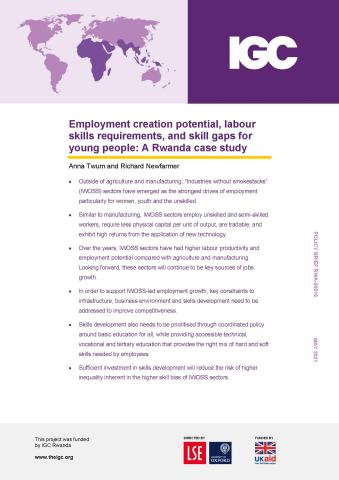-
Twum and Newfarmer Policy brief May 2021
PDF document • 383.26 KB
- Outside of agriculture and manufacturing, “Industries without smokestacks” (IWOSS) sectors have emerged as the strongest drives of employment particularly for women, youth and the unskilled.
- Similar to manufacturing, IWOSS sectors employ unskilled and semi-skilled workers, require less physical capital per unit of output, are tradable, and exhibit high returns from the application of new technology.
- Over the years, IWOSS sectors have had higher labour productivity and employment potential compared with agriculture and manufacturing. Looking forward, these sectors will continue to be key sources of jobs growth.
- In order to support IWOSS-led employment growth, key constraints to infrastructure, business environment and skills development need to be addressed to improve competitiveness.
- Skills development also needs to be prioritised through coordinated policy around basic education for all, while providing accessible technical, vocational and tertiary education that provides the right mix of hard and soft skills needed by employees.
- Sufficient investment in skills development will reduce the risk of higher inequality inherent in the higher skill bias of IWOSS sectors.




